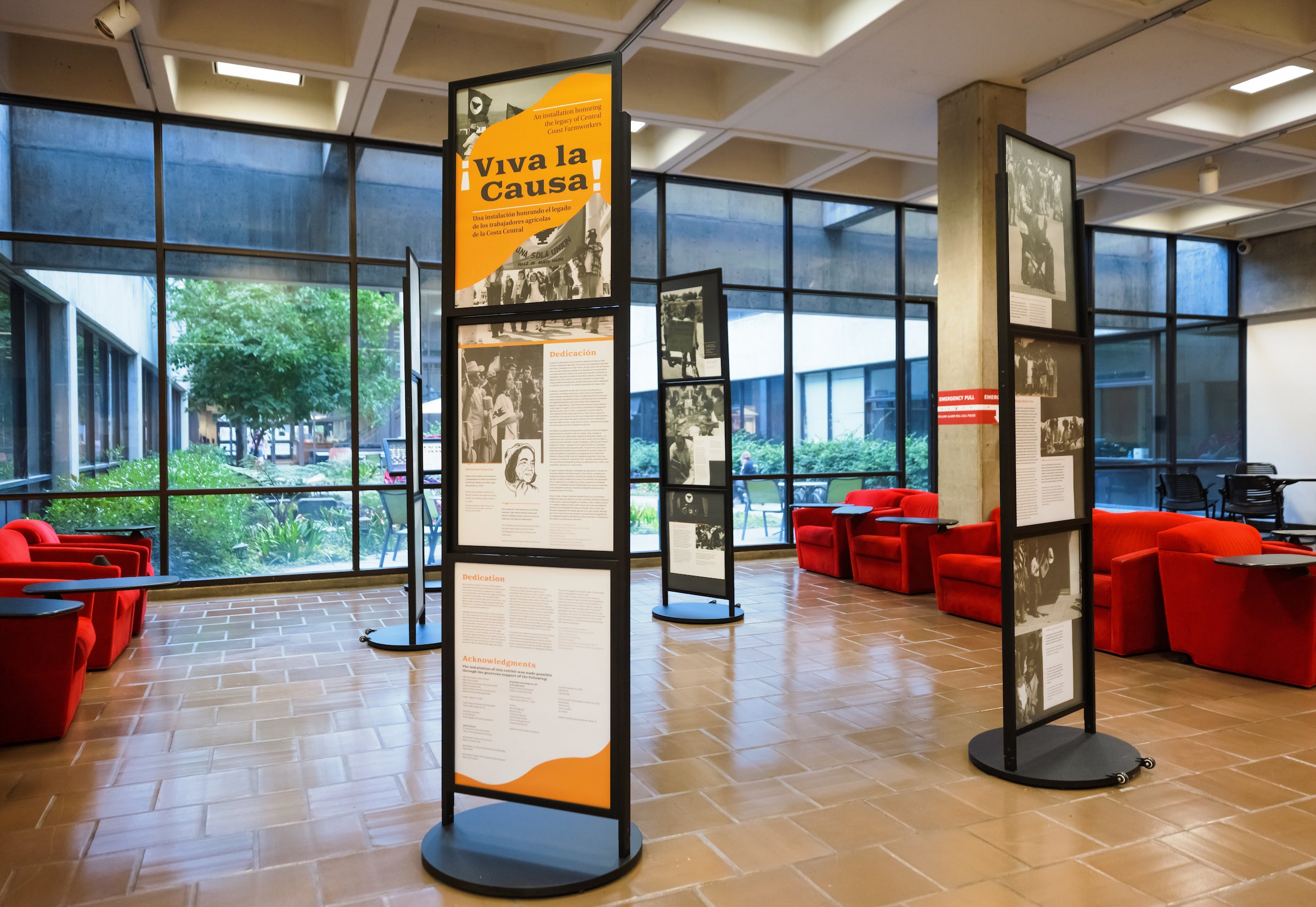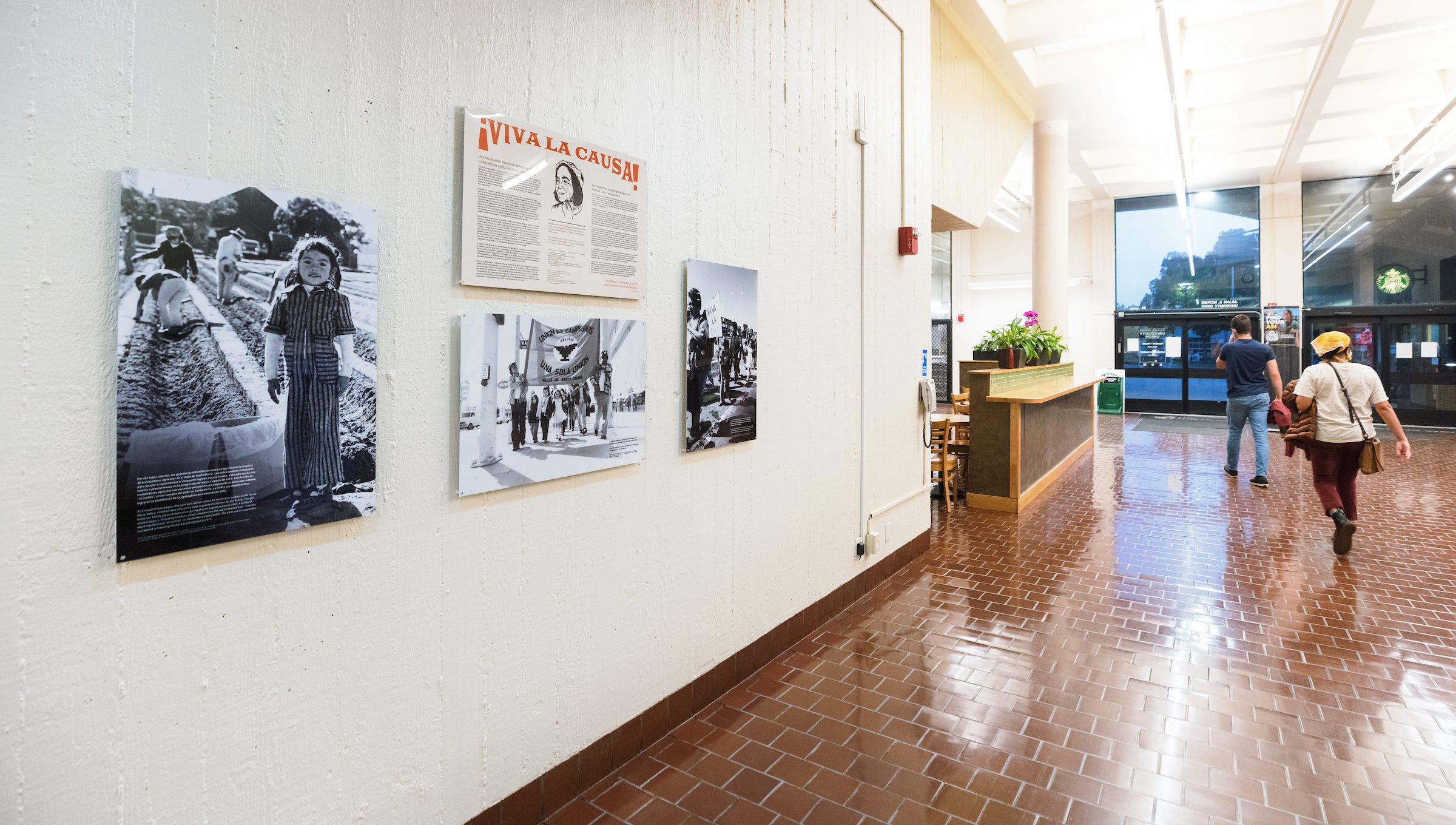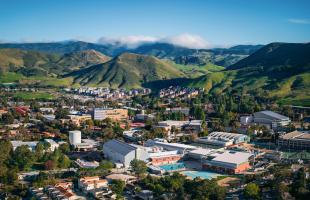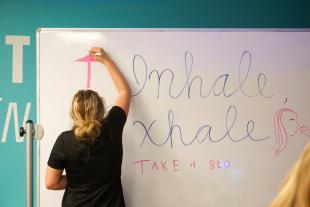Campus Community Members Discuss Challenges at State of Latinx
At the fourth annual State of Latinx on Thursday night, a group of Cal Poly faculty, staff and students gathered virtually via Zoom to discuss equity, inclusion and diversity within the Latinx community, and shed light on their experiences as members of the Latinx community at Cal Poly.
“These State Of events were born out of, like many things on this campus, student voices,” said Beya Makekau, director of Student Diversity and Belonging, at the beginning of the event. “We wanted to create an intentional space where — not only students — but faculty and staff have the opportunity to engage in critical conversation on their experiences and the state of those experiences on campus.”
The panelists at the event were: Martin Ralda-Martinez, a coordinator of student development for the yakʔitʸutʸu housing community; Oscar Velasco, a student teacher earning a teaching credential in social science and bilingual authorization; Lourdes Sarmiento Martinez, a third-year transfer student studying mechanical engineering; and Shanae Aurora Martinez, an assistant professor in the English Department, teaching Indigenous literatures. Vania Agama Ramirez, coordinator for the Dream Center, moderated the panel.

Throughout the event, which was open to the campus community, the panelists discussed a range of topics including the personal and communal impacts of the COVID-19 pandemic, the ways in which the Latinx community can continue to build and engage with different coalitions, such as Black Lives Matter and the movement to stop anti-Asian violence, how to better represent diversity within the Latinx community and thoughts on how Cal Poly can better support the Latinx community.
“Looking back on what I wish I had received: space to process culture and language when I came here as an undergrad. It was difficult to maintain my Spanish language — I'd go home and a lot of my family called me pocho (a negative term for a Mexican-American who doesn't speak Spanish)," Velasco said. "I think Cal Poly needs to hire more faculty that reflects the students, partner with local community colleges and high schools and provide more scholarship funding for DACA and undocumented students."
Fellow panelist Lourdes Sarmiento Martinez added that she’d like to see more effort to retain Latinx students, especially those from disadvantaged backgrounds.
“I personally feel like with lower-income students that get admitted, they should be here and they deserve to be here, but the retention numbers speak for themselves. They leave because they feel like they don’t belong,” she said. “I do think Cal Poly is far from being an HSI (Hispanic-Serving Institution) but there are some efforts that are noticeable. We’re making progress.”
The State of Latinx is part of a series of events organized around Latinx/e Heritage Month, which lasts from Sept. 15 to Oct. 15. Previous events during this month included a men’s soccer game on Oct. 3 and a virtual mixer Oct. 5, hosted by the Chicanx/Latinx Faculty Staff Association. The University Union and Kennedy Library are also hosting educational exhibits about labor leader and activist Dolores Huerta, photographed in this story.

This month, designated because it aligns with the independence dates of many Latin American countries, is a time to acknowledge and honor the histories, experiences and narratives of Latinx/e people, which is anyone from or with ancestral roots in Mexico, Central and South America, and the Caribbean.
The month is also referred to in the United States as Hispanic Heritage Month. The term Hispanic refers to people with Spanish ancestry, and is considered a term that centers the colonial narrative and is less inclusive than Latino/a/x/e.
The term Latinx developed as an inclusive alternative to Latino or Latina, which are gendered labels. Latine is a newer alternative to the term Latinx, developed because it can be pronounced in English and Spanish (having the letter x after consonants is not consistent with Spanish grammar and language rules).
Upcoming events related to Latinx/e Heritage Month at Cal Poly include:
- Latinx Culture and Gender Dialogue, 2:30- 3:30 p.m. Oct. 14 in the Gender Equity Center (UU 217)
- Millennial Lotería, 2 - 3:30 p.m. Oct. 19 in the Multicultural Center (UU 211F)
- Culturefest, 10 a.m. – 3 p.m. Oct. 23 in UU Plaza
Don't want to miss any cool Cal Poly News stories? Sign up for our monthly newsletter, the Cal Poly News Recap!




